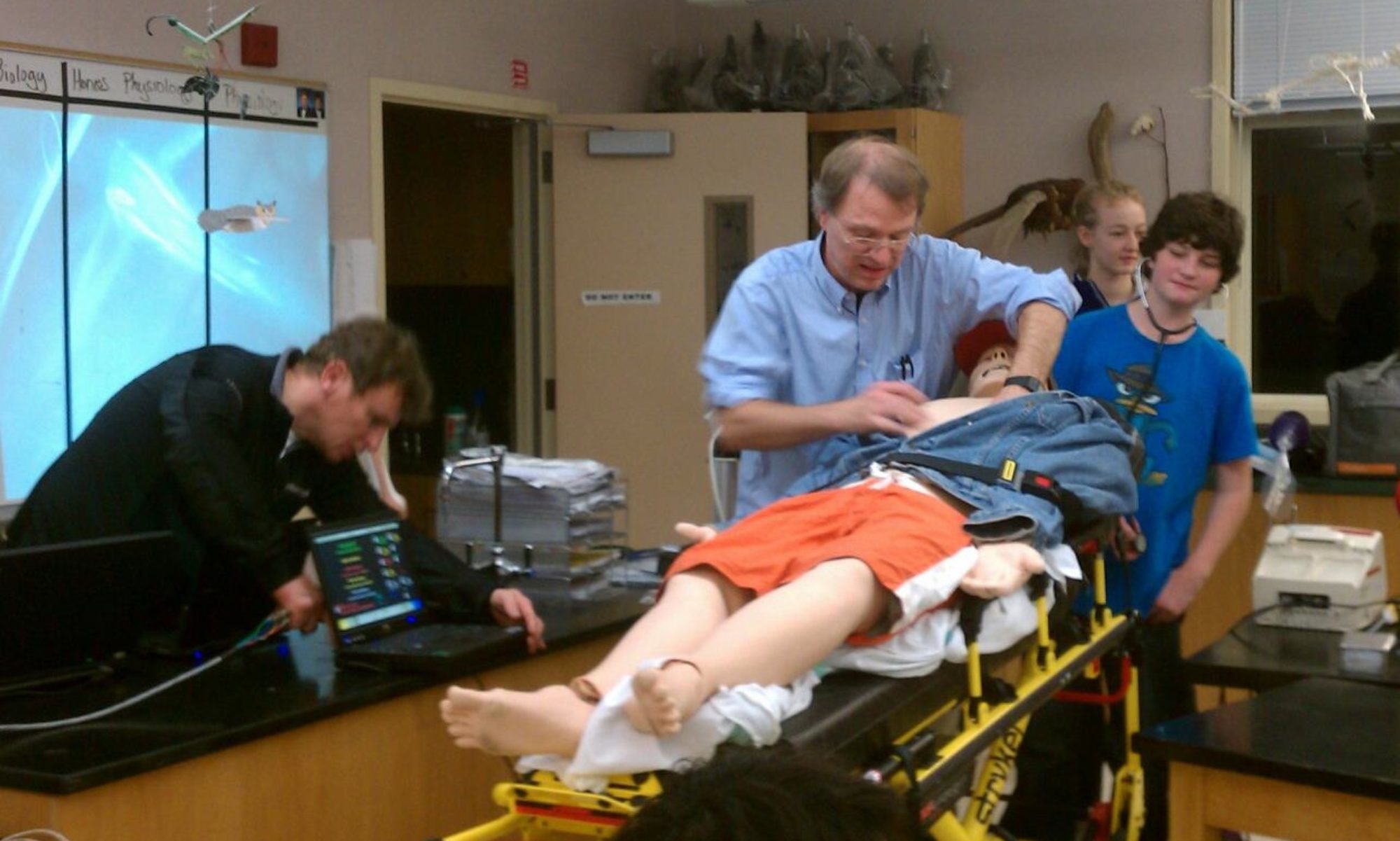by Gillian Parker, Tamalpais HS
Oftentimes it is nerve-wracking or even dangerous for new medical staff to carry out certain procedures on real patients. At the VA Medical Center in San Francisco, the Simulation Center has high tech mannequins to help train staff in a low-risk environment. These mannequins simulate a normal patient and allow new staff to practice various procedures like chest tube insertion and IV catheter insertion, among others. They can also be hooked up to monitors that are often used to observe patients.
Abi Fitzgerald practices one day every week in the emergency department at the SFVA as part of her one year fellowship in advanced clinical simulation. She is an RN and achieved her MSN at San Francisco State University. Read the following interview with Abi Fitzgerald to find out more about her experience with the simulators!
1. What is the best part about having the high tech mannequins to practice on?
The manikin’s ability to simulate human functions allows clinicians to practice going through the physical motions assessing patients in both emergent and non-emergent situations, as opposed to verbally walking through the process. This develops muscle memory and skills for recognizing normal vs. abnormal breath sounds, heart sounds, mental status, neurological functions and more.
2. How would medical staff be trained without these medical robots?
They could practice on actors, in which case the abnormal functions such as wheezes or heart murmurs are difficult to simulate. They would also practice on real patients, which they still currently do, but using a manikin allows them more freedom to perform procedures and other tasks that they wouldn’t necessarily be able to do on a live patient. Working with manikins allows students and clinicians to refine their skills before working with actual patients.
3. What procedures have you performed on the simulators? Could you describe some?
This year the VAMC sim lab acquired a few new simulators that have allowed us (the simulation fellows) and the clinicians who train on them, to become more familiar with a lot of new procedures. We now have an endovascular trainer which simulates procedures that take place in the cath lab such as non-open heart valve replacements. This is when the doctors access the heart valve through a long wire and tube that is inserted in the leg and follows the artery all the way up to the aorta and into the heart where they can replace replace a heart valve using fluoroscopic imaging. We also have a new manikin that simulates ultrasounds and displays a three dimensional virtual reality image on a computer screen.
4. Are there any flaws/negatives to the simulators?
The cost of acquiring the simulators and the repair costs can be high, but the quality of training and knowledge gained are very much worth it. Additionally, ongoing research projects have resulted in the acceptance of grant proposals which has made the acquisition of some of the simulators possible.
5. What are some things that the simulators can’t fully prepare you for?
Even though we do our best to make simulated scenarios as real as possible, there are always some elements such as smells and unexpected outcomes that can be difficult but not impossible to simulate well.
Come to the Marin Science Seminar on Wednesday, May 14th, 7:30-8:30 to hear Abi Fitzgerald and Richard Fidler talk about medical education robots at Terra Linda High School in Room 207, 320 Albion Way, San Rafael, CA 94903



